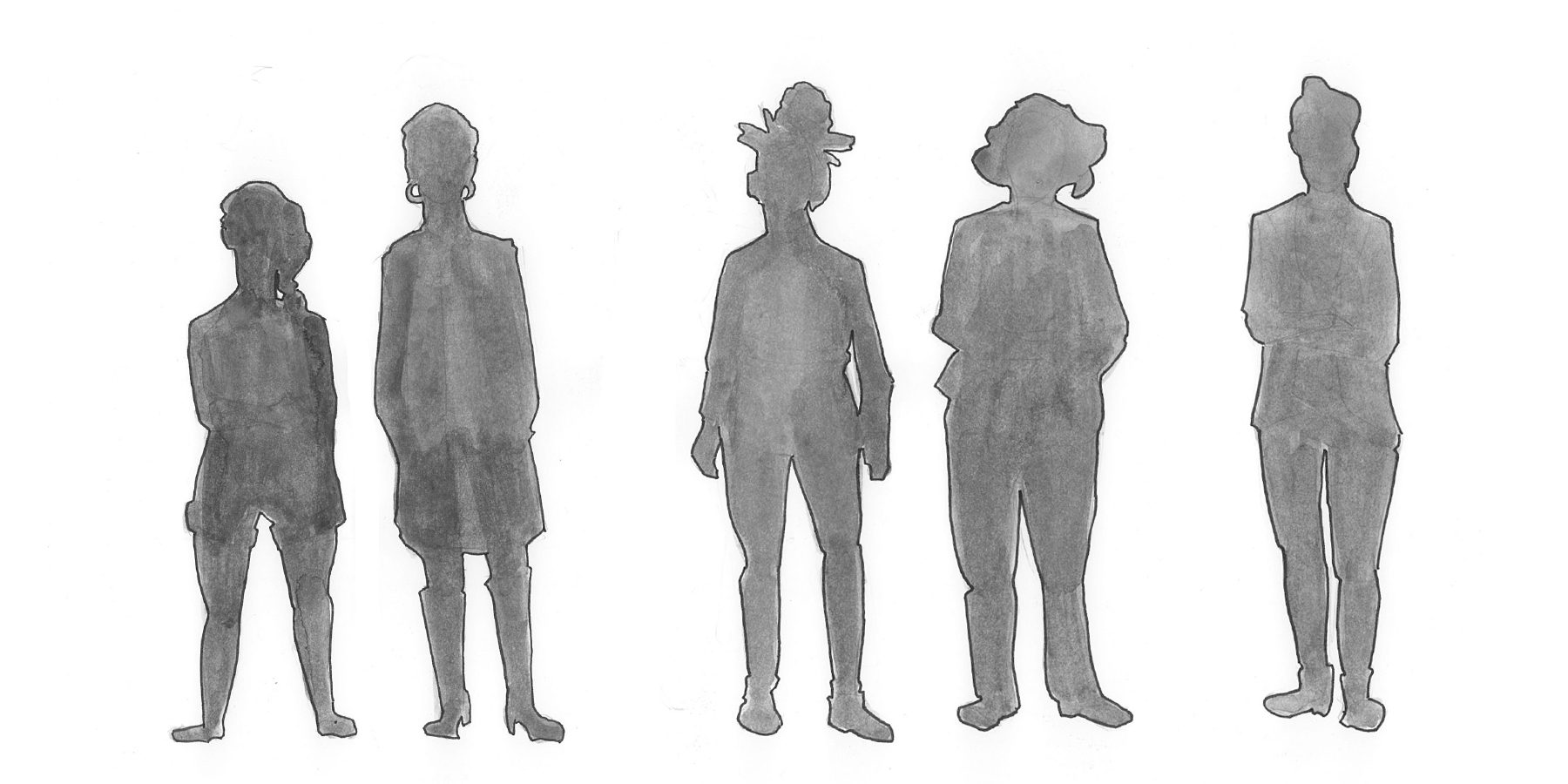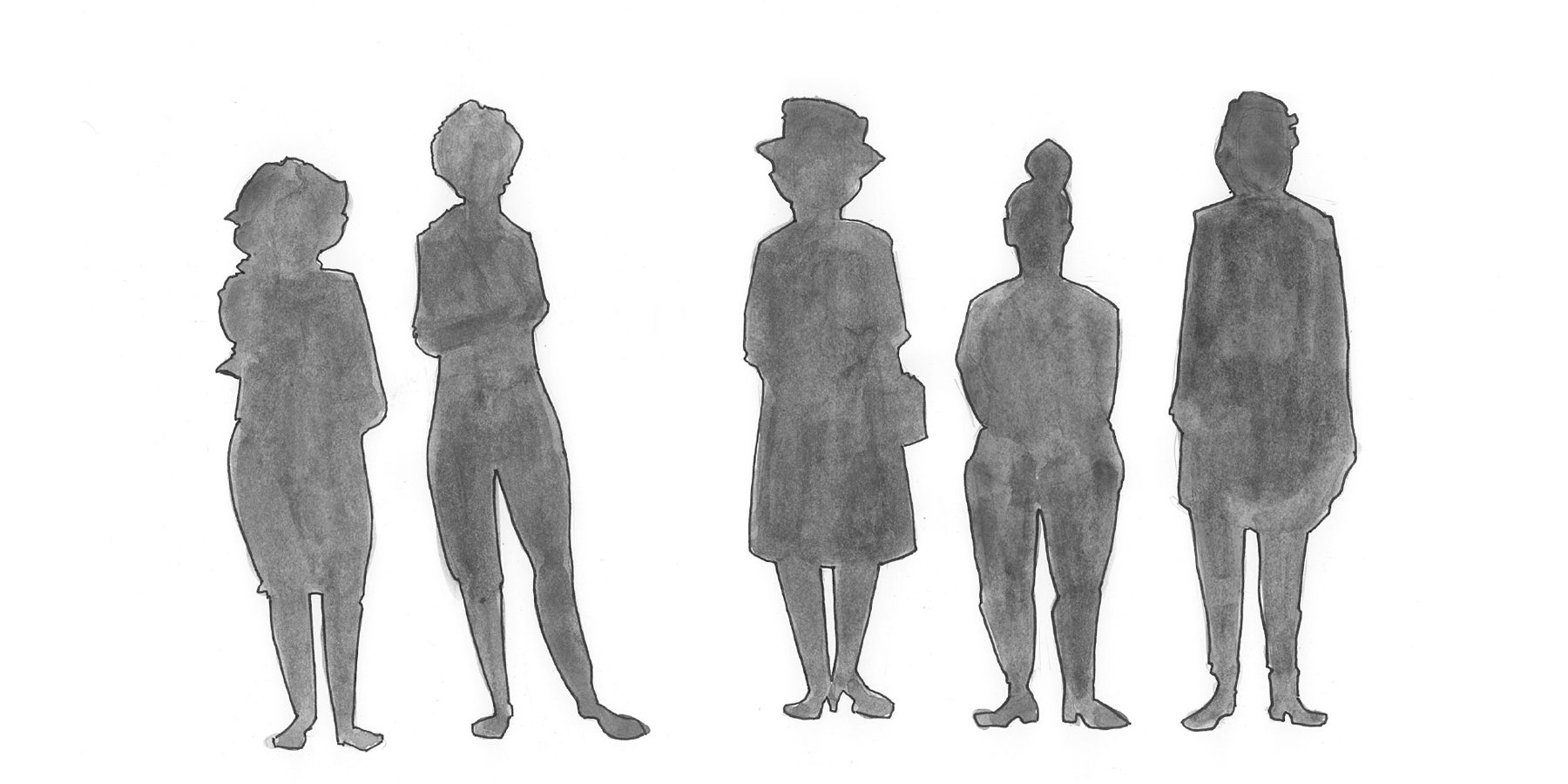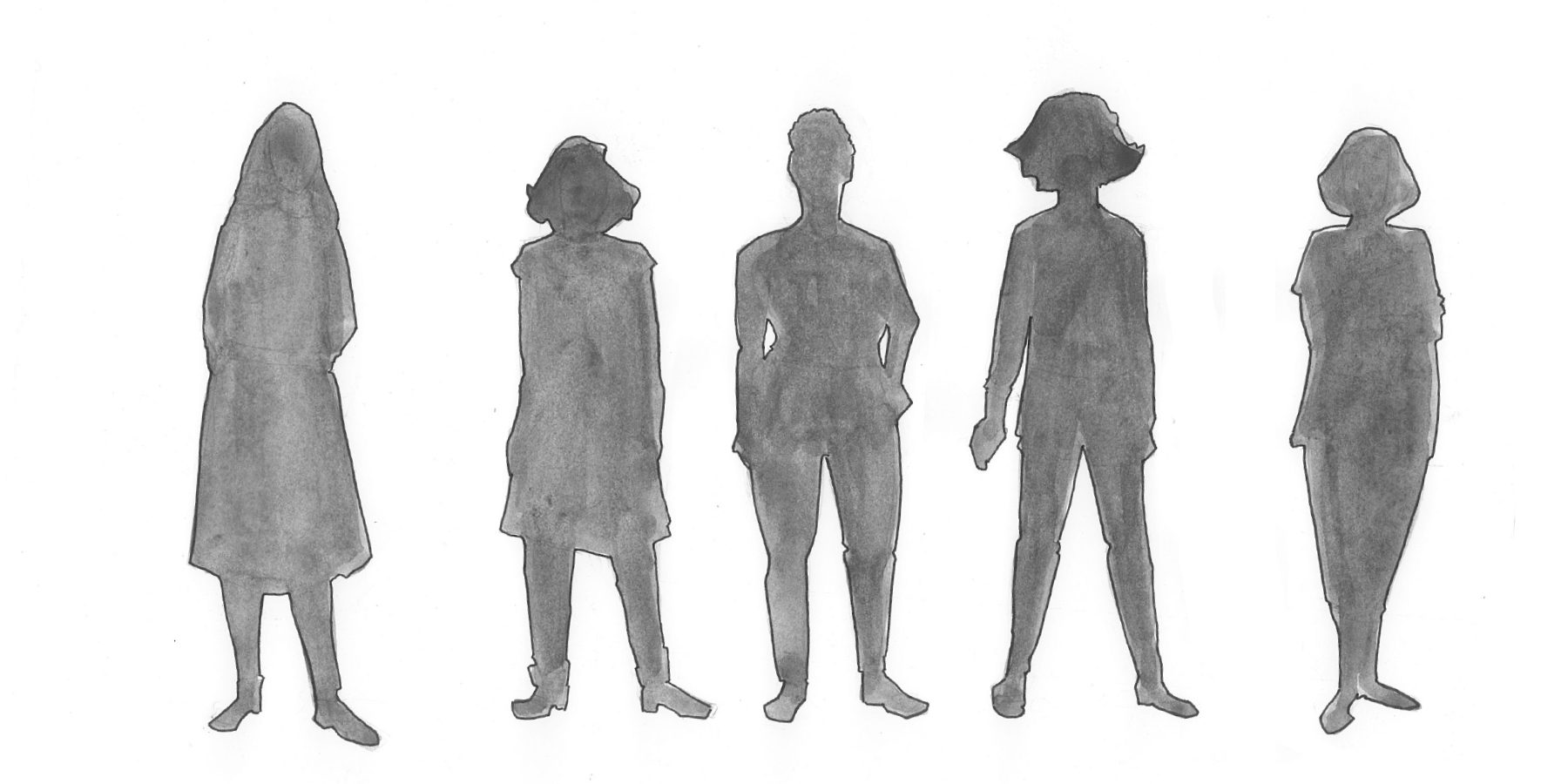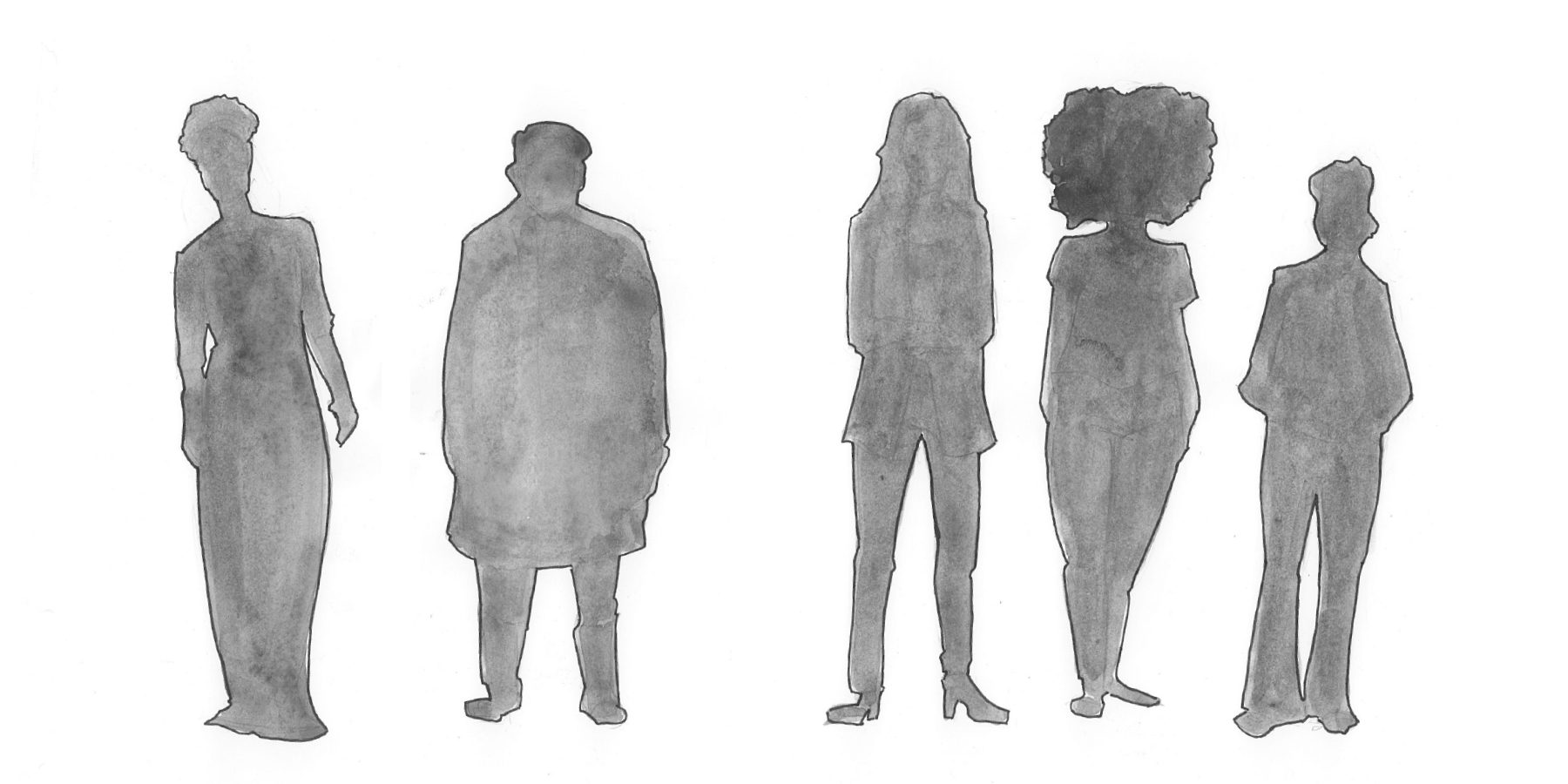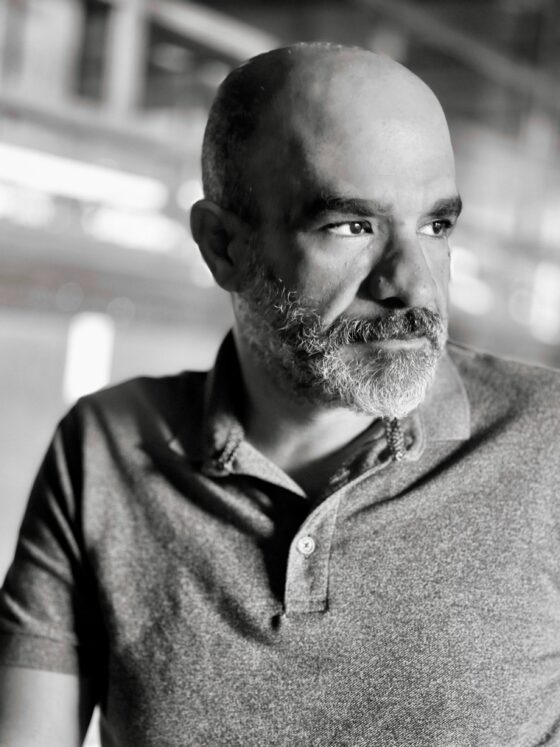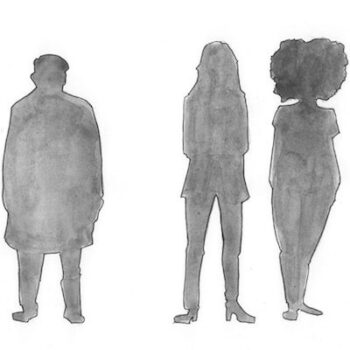
“I envy your freedom,” I say to my wife’s nephew. Confusion flickers in his blue eyes. He’s a slouched statue, a blond David—plus jeans, plaid shirt, modest goatee—come to life. It is Thanksgiving 2015. After dinner with Vivian’s side of our family in rural Connecticut, I linger at the table, sipping red wine and talking with Collin, a recent college graduate. Beyond sliding glass doors, most of the bright leaves have fallen, leaving skeletal branches amidst pines. “On our family walk before dinner, we were in that open field near the woods. I heard you say it’d be a good place to camp. You camp out often—alone—without telling anyone, right?”
“Yeah, I do,” he says.
“Wow,” I mumble.
“It wouldn’t occur to me—to tell someone.” He glances out the window at white pines my wife planted over twenty-five years ago, trees so tall they block our view of the Berkshire foothills.
I do not say what I’m thinking: this kind young man—a liberal white millennial, a brilliant chemical engineering major who grew up in this upper middle class neighborhood—may have no clue what it’s like to be female in the world. I recall Collin and his younger brother’s various adventures hiking, kayaking, and camping together—both considered old enough from a young age to go it alone. One, at sixteen, hitchhiked halfway across the country to see his girlfriend, inspiring more amusement than concern among his parents, grandparents, and aunts.
I remember feeling that free. I remember driving solo at nineteen from Houston to the Michigan State Forest for a music festival. At twenty-four, I saved enough to fly from my home in New York City to Europe, traveling alone for several weeks through France, Italy, and Spain. Family and friends thought my solo adventures extremely risky. “A woman alone?” they marveled. Of course, they were right. What had I been thinking? I was lucky. But I stopped depending on luck a long time ago.
“Recently, I stopped hiking alone on the mountain behind our house. Technically, it’s a hill,” I say, taking a sip of wine.
Collin looks over at me, eyebrows lifted. “Huh? But why?”
Should I admit to this kid that I take precautions on a regular, even daily basis? That for many if not most women, thinking about safety, making choices based entirely on safety, becomes second nature. Then there are the measures that aren’t second nature. Walking in a parking garage at night with keys wedged between my fingers. Gripping pepper spray in my fist while jogging. Surely, he knows this stuff. But then I remember an old boyfriend saying he’d hitchhiked across the country, traveled and lived all over the globe, and never in his life felt vulnerable, physically, just moving through the world. I recall several seconds of long-distance silence as we each tried to fathom the other’s life.
I look at Collin. His smile waits for an answer. “I used to hike up to the scenic overlook several times a week, but it’s isolated. I’d feel safer in Brooklyn, walking from the subway to my old apartment in Red Hook. Yes, it’s the degree of isolation—that’s the difference,” I say.
“Uh, I can’t imagine, never walking, alone, in the woods again. That’s very sad,” Collin says, blinking.
“Yeah, it is. But a female jogger was raped on the rail trail near us this summer. And another was stabbed and killed last year.” I push my chair back a bit from the table. I recall seeing her small, informal memorial on the side of the road and turning my bike around to stop and pay my respects.
“But what are the statistics? Aren’t you taking a similar risk just driving?” Wide-eyed, attentive, he leans forward slightly.
I take a deep breath, uncross and recross my legs. I am not in the mood to educate this young man about women’s issues after that second serving of turkey, dressing, and homemade cranberry sauce. However, he clearly doesn’t get it.
“It starts early,” I begin, stumbling into an explanation of what it’s like to grow up in a female body. What I don’t say: at ten, I was molested by a male family friend. Around the same time, my male softball coach kissed me. A man grabbed my crotch while I was taking out the garbage for my mother. In high school, a friend’s father tried to kiss me.
I tell Collin that throughout childhood and my teenage years, numerous men exposed themselves—at a neighborhood park, or they’d drive up alongside me as I rode my bicycle.
But I considered myself lucky. It could be much worse, I’d always heard and told myself.
I don’t tell Collin that a friend, I’ll call her Mona, as a small-boned thirteen-year-old, was robbed of her jewelry and money on a city bus at knifepoint then forced off and raped by three men. I remember her matter-of-fact tone as she told me, as if she was reciting a grocery list. Or that at my first job, a coworker described being raped for several hours in her own bed by a stranger who climbed through her window. She, too, spoke of the attack as a list of dull facts. Surely, speaking those words was hard enough, much less feeling her words in that moment.
Nor do I tell Collin that when I was about his age, a professor tried to pursue a relationship with me while recording our more academic conversations for “evidence.” I had felt lost in that confusing power dynamic, suffering intense anxiety by semester’s end. And I don’t mention my friend, Annette, a songwriter/singer in high school, who went missing in 1984 after marrying a much older man. The last time I saw her, we sat in the grass talking. She said she was in love—they were planning a trip from which she would never return.
I don’t mention waiting in line for the bathroom at a music venue in New York City when I felt quick hands grab my breasts and buttocks. As I turned around and began to yell at the man standing behind me who smiled calmly, a circle of his friends surrounded me, pushing me back and forth a few times while the blues band played. I ducked under them and escaped, found my then-husband, and wept in his arms outside. When I called the police to report what had happened, the officer asked what I’d been wearing. Of course, his question was irrelevant, but I had worn a simple, loose-fitting work blouse and skirt.
Whatever words I do say sound to me like they’re the problem—because I’m speaking them aloud. I won’t remember all that I do and don’t say to Collin, perhaps because I censor more than I say. Collin listens attentively. Debates gently. But I’m keenly aware that I’m offering painful personal testimony as evidence to a scientist-in-the-making. Finally, thoughtfully, he leans forward even more, and looks sincerely and directly into my eyes. “But, I mean, the chances of an auto accident are still probably greater, no? I hope you’ll look at the stats so you can gain more confidence.”
The irony of our little discussion at this time in my professional life is not lost on me. “Collin, I don’t know what you know about the book I’m writing. But here’s the thing—nineteen-year-old Mollie Olgin felt confident on the night of June 22, 2012. That’s why she pressed her eighteen-year-old girlfriend, Kristene Chapa, to get over her “paranoia” and take a three-minute walk from a parking lot to a scenic overlook in a suburban neighborhood. Portland, Texas had earned its reputation as a safe destination, although she surely did not know the FBI stats—there’d only been one murder since 1993, the year Mollie was born. On that summer night, statistics did not save her life.”
*
I have thought a lot about what Collin said that evening. It meant a lot to me that he clearly grasped my loss in feeling unable to explore the woods—and the world—alone. However, I felt stunned by his suggestion that the problem is mine—a lack of confidence—rather than being a problem with the culture in which we live. And from his last comments as we got up from the table, it seemed nothing I said complicated his perspective. Perhaps I was too calm, or too bewildered.
I know a couple of statistics. The Rape, Abuse & Incest National Network (RAIIN) reports that one in six women “have experienced an attempted or completed rape in their lifetime”—if only counting from the age of twelve. And the vast majority of rapes are “completed.” In contrast, one in 33 men have been raped, or experienced attempted rape, in their lifetime. Here are some staggering numbers that I did not know: Child Protective Services reports that 63,000 children are sexually abused each year—one in nine girls and one in 53 boys. Of these, 1/3 are under the age of twelve.
These statistics don’t give me confidence. And the more I search the Internet for relevant, updated numbers, the more I find conflicting reports. Even organizations like RAIIN—that use the Department of Justice’s supposed “gold standard” National Crime Victimization Survey (NCVS)—may post outdated info. While RAIIN tends to use the most reliable statistics available, it turns out that some of their numbers—like 1 in 6 women will be sexually assaulted—date back to 1998. No, that’s not a typo. I’ve raised a toddler to legal adulthood since then. American culture has changed profoundly in the past eighteen years while the population has grown substantially.
According to RAINN, “Sexual violence is notoriously difficult to measure, and there is no single source of data that provides a complete picture of the crime.” When I spoke to one of the organization’s attorneys over the phone, he admitted that some topics on the website have been updated recently and others are long overdue. The Centers for Disease Control (CDC) claims the gold standard NCVS misses 88% of victims by failing to frame questions specifically and eliminate confusion over definitions—such as what constitutes rape. Unfortunately, the CDC’s work to eliminate confusion also makes its results controversial. Meanwhile, the Federal Bureau of Investigation only documents cases brought to the police, leaving a tremendous gap between their numbers and assaults in the US.
The National Sexual Violence Resource Center (NSVRC) publishes a document titled “Info & Stats for Journalists.” Some of their statistics are even more startling: one in five women—college-aged or otherwise—“will be raped at some point in their lives.” Nine of every ten student victims do not report sexual assault. I recall what Collin said about his girlfriend—she is rarely ever alone at college so she feels safe. I’m not sure how I would have gotten through college if I’d given up my solitude for safety. How many long walks through Vermont woods did I take during those years? How many nights did I work late in vast, empty buildings?
Of course, staying in for the night does not ensure safety. According to the NSVRC, 55% of sexual assaults occur in or near a victim’s residence. I gather statistics and articles that might help Collin start to understand that walking in the world, or even being in your own home, as a female, often means watching your back. I recall being Collin’s age and walking confidently down a New York City street when I was beaten and mugged. As I research, I remember other statistics I know by heart: almost all of the women that I have ever been close to have experienced sexual harassment (too often throughout their lives), and most have been sexually assaulted at least once. A partial list includes my sister, my mother, a stepmother, my grandmothers, all of my closest friends (yes, all), my wife, my daughter, and me. As I end that painful list, I remember another name. My ex-wife, an artist whose work has addressed the subject of childhood sexual abuse, struggled to enjoy her connection with my daughter who adored her. My ex described always being afraid—as if she was poisoned by her past trauma—to hug my child. That legacy of abuse contributed significantly to our marriage ending.
Recently, I saw Mary Rose, the mother of Annette, the friend who’s been missing since 1984. We met the night before she flew to Louisiana to testify against Annette’s now seventy-five-year-old husband, Felix Vail. Charged for the murder of his first wife, the court made a rare decision to allow testimony regarding the disappearance of Vail’s ex-girlfriend, followed by the disappearance of Annette. It was Mary’s relentless research and advocacy over the decades, on behalf of Annette and Vail’s other victims, which led to his arrest. At dinner, I gave Mary a copy of a short article Annette wrote in 1980 for our school paper—about cycling as an alternative to driving. She extols the virtues of my new sport since giving up hiking alone, and compares cycling to flying, noting “…the fresh air, the time to be alone, the freedom…” She, too, sought solitude, and the experience—the sensation—of freedom. The oldest suspected serial killer in the nation, Annette’s husband was found guilty of murdering his first wife and will serve a life sentence without parole. While Annette’s mother is grateful that Vail can never hurt another woman, there are no answers to her many questions about Annette’s death, including the location of her remains.
Women make choices daily between the freedom to enjoy solitude—whether alone at home or in the world—and safety. My sporty English professor friend says she doesn’t walk in the woods alone, admitting she’s never questioned this “fact of life.” For her, it’s not a loss—it’s a given. A privilege she never considered having. In contrast, an adventurous young neighbor hikes alone regularly and posts weekly photos on her Facebook page—dramatic shots taken on mountains all over the state and nation. She says she feels safer on the top of some mountain than at home, where she has received, on occasion, intimidating calls from her ex in the middle of the night. She also said our local police don’t seem to take her concerns seriously. Recently, she decided not to call them after a male stranger tried to join her on a walk at our nearby reservoir, during which he asked if she’s single, if she likes men, or if she’s a “man hater.”
Since moving to this small town in Connecticut, I have felt haunted by something my wife told me, something that happened over twenty years ago at the same reservoir, where we also like to walk. Vivian used to hike with her dog in the woods. One day her mother called to confirm that she was alive—because a local woman had been walking her dog near the reservoir when a man assaulted her, then left her to die. The passing of time does not necessarily help us feel any safer—especially when similar attacks have happened so recently. In this way, violence against women in a community can become another kind of legacy with which women live.
Shortly before I stopped hiking alone, my wife and I were on our way up the mountain behind our house when we saw a man who looked more like a meth head than a hiker. We stopped talking as he approached and placed our hands on our pocketknives, as if they made all the difference. After passing, we checked repeatedly to be sure he didn’t turn around. On another hike, headed back down the mountain, we spotted a man wearing tactical gear and wielding a machete next to the path just ahead. He chopped at the air and random plants. It was too late to turn back or leave the trail. He’d glanced at us. Though he seemed to be in a trance, more android than human, he nodded as we passed quickly. We walked as fast as we could without running. I decided to stop hiking alone after that encounter. We’d been lucky. Luck runs out.
When I tell a friend—a social worker focusing on women’s issues—about Collin’s comment, she says, “I came to the conclusion about ten years ago that it was easier to count the number of female friends who hadn’t been molested or assaulted, because the list is shorter than the ones who had been.” Eight of her women friends have been raped but none of them reported it “because of the repercussions it would have on their lives.”
The vast majority of rape victims in the US do not report it. For those who do, 97 of every 100 rapists walk free while tens of thousands of rape kits go untested. It’s relevant to note that the incidents I’ve listed are taken almost entirely from the lives of white women like me from low income to middle class American families, but who may have little or no experience of the complex challenges that intersecting and overlapping bias and discrimination present. According to the NSVRC, lesbians are at a greater risk of sexual violence than heterosexual women, while bisexual women face the greatest risk. Furthermore, indigenous women and women of color—especially transgender women of color—experience the highest rates of sexual assault and are even less likely to report an attack.
A woman’s history of abuse is but one thread through her life—yet abuse tends to affect, profoundly, the rest of a life. Victims often suffer Post Traumatic Stress Disorder (PTSD), depression, and substance abuse. Some contemplate, attempt, or commit suicide. Sometimes the effects go deep without detection. One close friend, a highly successful professional, told me that after she was molested by a neighborhood boy at the age of ten, she felt powerless, “gave up” on her just-forming dreams, began to suffer depression, and did not begin to recover herself and her life until her late thirties after years of therapy and hard work. “I lost almost thirty years of my life,” she says. “I want those decades back.”
Many young women notice that being safe in one’s own bed or walking in a parking lot—much less exploring the world solo—is something young men their age rarely if ever worry over. When I asked Collin if he worries about threats to his safety from other men, he looked back as if I’d inquired about aliens. Meanwhile, my wife and I carefully schedule our bike rides so that we’re off the rail trail before dark.
I question whether it’s my place to send stats to Collin—though he’s the one who questioned whether my decision to stop hiking alone is rational. On one hand, I feel protective of my nephew, but of what? Protecting his innocence perpetuates his ignorance. So, on the other hand, I want to shock him. Wake him up. Sexual assault and violence against women is a cradle to grave issue. If this fact surprises some young men—then that’s part of the problem. It is essential that we teach our boys and men about our experiences as girls and women. Somehow, Collin graduated from a top Ivy League university in 2014 without understanding that year’s #YesAllWomen hashtag used by women across the country and world to describe on Twitter, often in explicit detail, how sexism, misogyny, and sexual violence affects their lives. Recently, when President-elect Donald Trump boasted of grabbing women “by the pussy,” writer Kelly Oxford asked women to tweet their first sexual assault and the Internet conversation picked up where it left off, this time with the hashtag #notokay. Tens of thousands of women described experiences of being assaulted as babies, children, teenagers, and adults. Clearly, Trump’s misogynistic statements and depraved boasts of sexually assaulting women, even added to his stated racist, homophobic, ableist, and xenophobic statements, was not a deal-breaker for nearly half of those who voted.
On a long distance phone call with another friend, Maya, I mention the conversation from last Thanksgiving. She’s traveling alone in Florida and has parked in the lot of an open business so she can get out and stand under blue sky while we talk. When I tell her about Collin’s suggestion that I research stats so I can feel more confident, she says, “Ironically, as we talk, a man in a car is circling the parking lot a third time, craning his neck to look in my direction each time he drives by. I’m so tired of driving and just wanted to stand in the open air on a sunny day. Damn it, I’m getting back into my car. I just locked the door.”
While I’ve seen Collin several times since last Thanksgiving, I never brought up the topic about which I’d monologued that day. After the election, he posted, ”RIP America, to anyone who’s not a cis white male; I’m sorry.” During Thanksgiving dinner, I noticed that he made several comments that were absolutely, unapologetically feminist. He described the sexism that two of his female professors face in academia, and then complained about a “muscular Christian” radio show in which the host addressed male listeners only, ignoring “the other 50.8% of people in this country.” After dinner, as he helped me break down a side table, I mentioned that I’ve thought a lot about our discussion last year and wrote an essay I’d like to share with him. He said, “I’ve thought a lot about that too. Please send it.” After reading it, he offered permission to use his real name and asked if he could share it with his fraternity brothers.
We need to keep talking to the men and boys in our lives—whether they voted for or against Trump. It is imperative that we share our perspectives based on lived experience, even when it is painful. Especially when it’s painful. We never know how our words, our stories, may grow in another person.
What do we need most at the upcoming Women’s March on Washington? In addition to a million women, we need a million courageous men—men willing to listen and learn from women’s lives, men willing to take a stand, defend, and speak up on behalf of women, girls, and LGBT people everywhere.
***
Rumpus original art by Lauren Kaelin.

